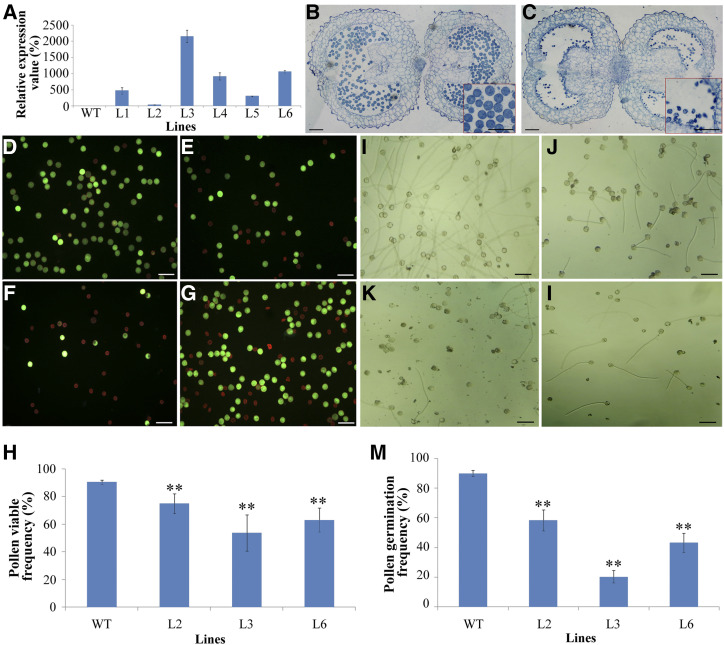Figure 2.
PSP231 overexpression dose-dependently undermines pollen viability and functional ability. A, RT-qPCR analysis of PSP231 expression in anthers of T3-generation wild type and transgenic lines (L1–L6) in tobacco. B and C, Semithin sections of wild-type (WT; B) and transgenic (C) mature anthers. Insets (red boxes) show amplified segments of the images. D to G, Assay of pollen viability in PSP231 transgenic tobacco (see “Materials and Methods”) for pollen grains from the wild type (D) and three PSP231 transgenic lines (L2 [E], L3 [F], and L6 [G]). Viable pollen grains display green fluorescence, whereas unviable pollen grains are red. H, Statistical analysis of the percentage of viable pollen in different transgenic plants and the wild type. I to M, Assay of in vitro pollen germination of the wild type and PSP231 transgenic lines for germinating pollen grains from the wild type (I) and three PSP231 transgenic lines (L2 [J], L3 [K], and L6 [L]). M, Statistical analysis of pollen germination rate (%) for different transgenic plants and the wild type. For H and M, data are means ± sd for three replicates. Dunnett's t test demonstrated that there was significant difference (*P < 0.05) or very significant difference (**P < 0.01) in percentage of viable pollen and pollen germination rate between the PSP231 transgenic plants and the wild type. Scale bars = 100 μm.

